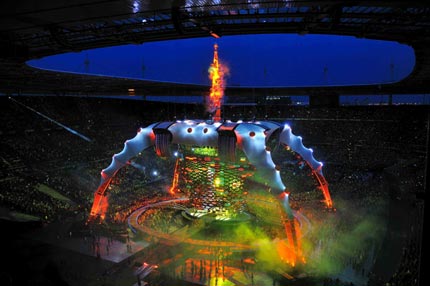Introduction to the Research

Live Architecture: The History and Development of Popular Music Performance Architecture
A research project led by Professor Robert Kronenburg,
Roscoe Chair of Architecture,
The Liverpool School of Architecture,
University of Liverpool, UK
On the 15th August 1965 The Beatles performed before more than 50,000 fans at Shea Stadium, New York, USA. In what was by far the biggest event to date of its type, a dramatic revelation of the commercial possibilities of popular music took place and changed the nature of the music business forever. Simultaneously, despite using more powerful amplification than had been used before, the virtually non-existent connection between the musicians and their audience revealed the enormous technical and architectural challenges of large-scale concerts. This was one of the pivotal moments in popular music history, an event that had immense cultural resonance, establishing critical creative and commercial ramifications that were inextricably connected with the architectural space that supported not only that specific event, but the cellars, clubs, and halls in which the Beatles had honed their performances and gained their reputation.
The aim of this research project is to examine the contemporary state of the art in popular music performance space, and to prepare its first definitive architectural history, describing its inception, development, and consolidation. The research examines in detail the design and form of popular music architecture, and charts how it has been developed in ad-hoc ways by non-professionals such as venue owners, promoters and the musicians themselves, and professionally, by architects, designers, and construction specialists. It explores the impact that the use of public space for performance has on urban identity, and how it influences the way city, and to a lesser extent, rural space is perceived and used. Like architecture, popular music is neither static nor standardised, it continuously develops and has multiple strands. This research quantifies the factors that have determined the development of venue architecture focusing on both famous and less well-known examples from the smallest bar room music space to the largest stadium-filling rock set.
The project is based on library and archive research, building visits, concert experience, interviews with designers, promotors, managers and musicians. A programme of dissemination via invited lectures, conference presentations and publications in journals and books is ongoing.